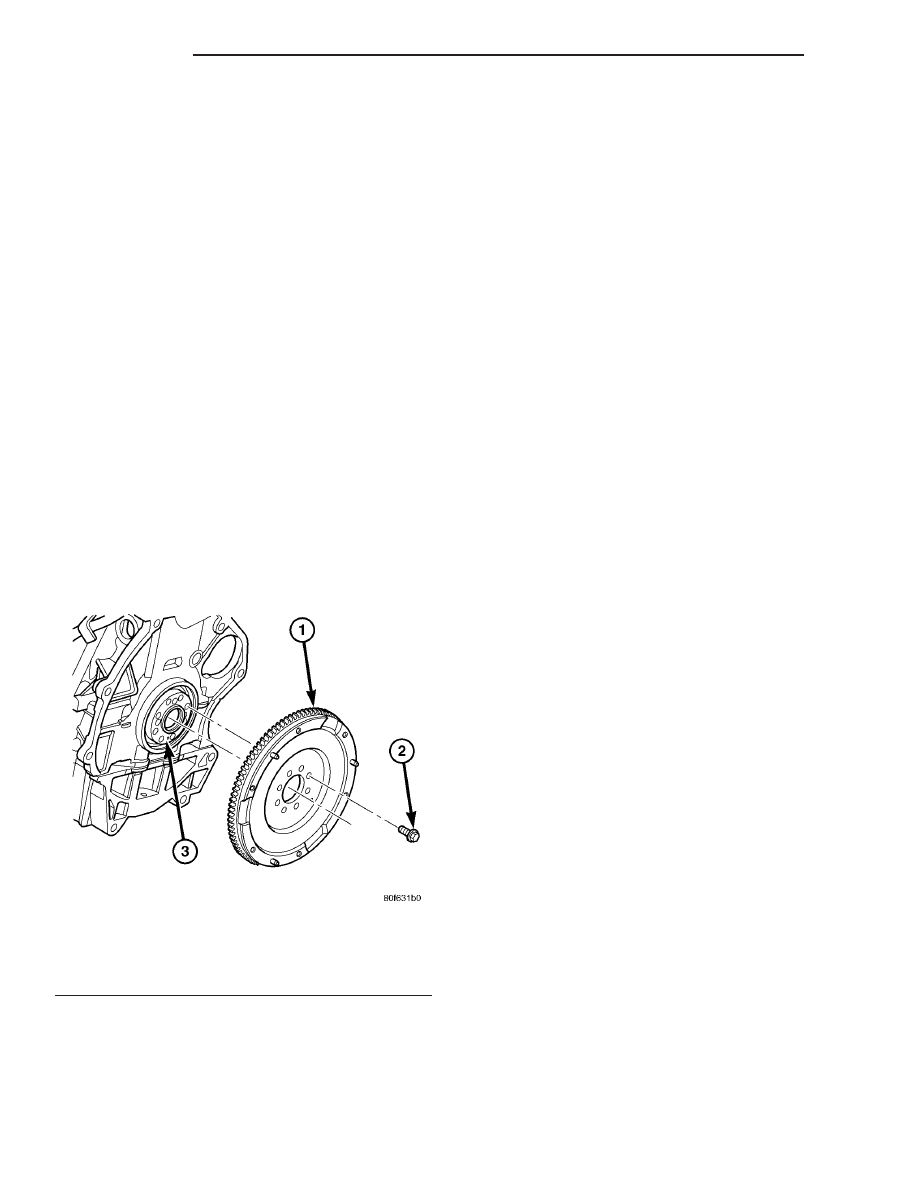Chrysler PT Cruiser. Manual - part 444

INSTALLATION
(1) The pivot ball pocket in the lever, as well as
the lever arms should be lubricated with grease prior
to installation.
(2) Assemble the lever to the bearing (Fig. 30). The
small pegs on the bearing must go over the lever
arms.
(3) Slide the bearing and lever assembly onto the
input shaft bearing retainer, as a unit.
(4) Snap the clutch release lever onto the pivot
ball.
(5) Reinstall transaxle assembly. (Refer to 21 -
TRANSMISSION/TRANSAXLE/MANUAL - INSTAL-
LATION)
FLYWHEEL
DESCRIPTION
1.6L Equipped Models
1.6L Equipped Models utilize a conventional fly-
wheel assembly, which is a solid rotating mass fas-
tened to the rear of the crankshaft (Fig. 31). The
flywheel also incorporates an integral starter ring
gear.
2.2L Turbo Diesel Equipped Models
The Dual-Mass Flywheel (DMF) is utilized on 2.2L
TD/5-speed models. Models equipped with the turbo-
charged 2.4L Engine option also utilize a Dual-Mass
Flywheel, but it is a serviceable part of the Modular
Clutch Assembly. (Refer to 6 - CLUTCH/MODULAR
CLUTCH - DESCRIPTION). The DMF consists of
two decoupled masses (primary and secondary mass)
which are connected via a spring/damping system
(Fig. 32). The primary flywheel side is bolted to the
crankshaft. The secondary flywheel face serves as the
driving member to the clutch disc. Internal springs
between the flywheels are used to couple the masses
while dampening energy. The flywheel also incorpo-
rates the ring gear around the outer circumference to
mesh with the starter to permit engine cranking.
OPERATION
The flywheel serves to dampen the engine firing
pulses. The heavy weight of the flywheel relative to
the rotating mass of the engine components serves to
stabilize the flow of power to the remainder of the
drivetrain. The crankshaft has the tendency to
attempt to speed up and slow down in response to
the cylinder firing pulses. The flywheel dampens
these impulses by absorbing energy when the crank-
shaft speeds and releasing the energy back into the
system when the crankshaft slows down.
On a Dual Mass Flywheel, the additional second-
ary mass coupled to the transmission lowers the nat-
ural frequency of the transmission rotating elements.
This decreases the transmission gear rattle. The
damper springs between the two flywheel masses
replace the clutch disc damper springs and assist in
a smooth transfer of torque to the transmission.
CAUTION: The Dual Mass Flywheel is serviced as
an assembly only and should never be disassem-
bled.
Fig. 31 Flywheel-to-Crankshaft
1 - FLYWHEEL
2 - BOLT (8)
3 - CRANKSHAFT FLANGE
6 - 20
CLUTCH
PT
CLUTCH RELEASE BEARING (Continued)